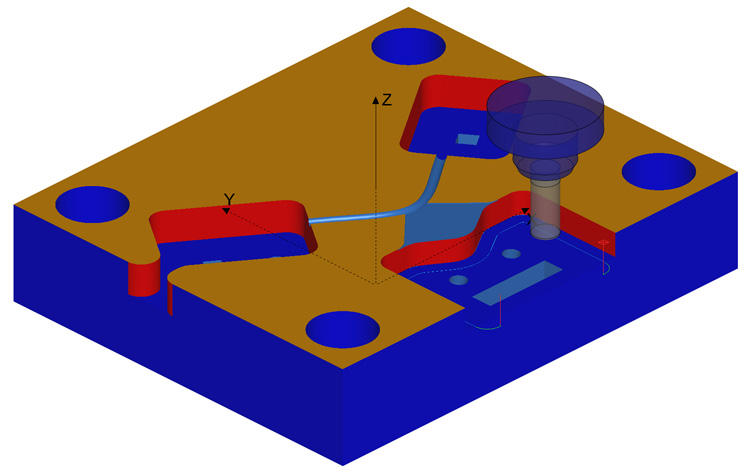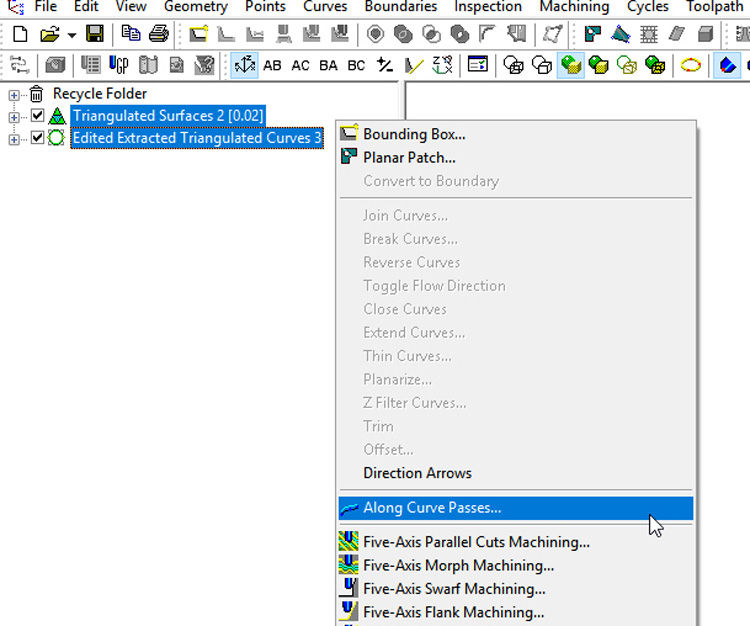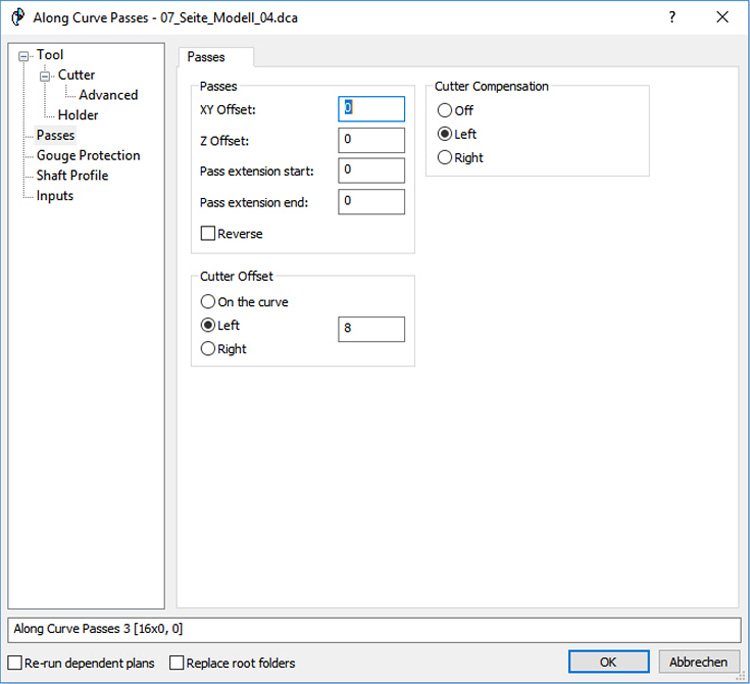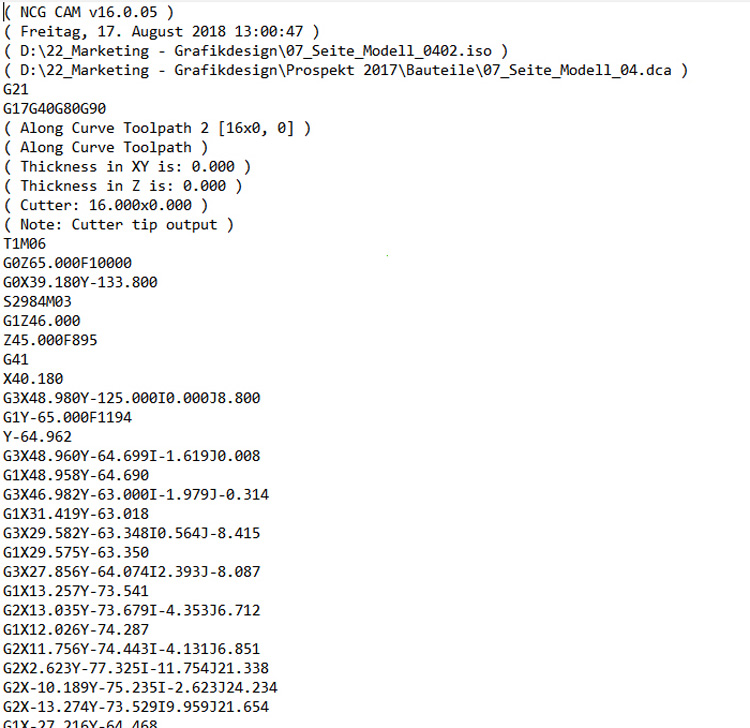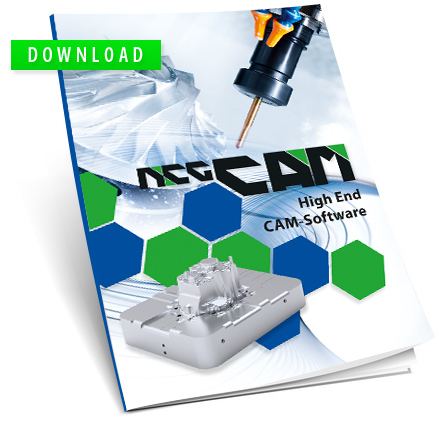Machining along a curve is just as it says - it is the curve that is machined not the surface data. This will allow a toolpath to be generated below the surfaces if needed.
Curves can be read in from the geometry file or extracted from the model. If extracted from the model the curve may be 3D and will be respected as 3D when machined. Curves can also be extracted as 2D curves to be used for 2D machining. These extracted curves contain accurate lines and arcs to get the desired NC Tape file with circular arc moves. There is also a convert curve to boundary function.
Open curves can be joined to get a continuous profile – often in a model it will be several bits of curve that require joining to reduce the number of retract moves.
The along curve machining supports 2D cutter compensation (G41 & G42 or cutter left/cutter right). This enables 2D profiles to be sized on the machine tool; the toolpath has arc fitting for optimised output. Cutter compensation is only available on a 2D curve.
Creating multiple points for start hints allows the user control over the start position and for several curves to be machined within the same operation.
A pass extension will allow the toolpath to be extended out (open profiles) to the cutter can be forced to start clear of the part, for a better cutter approach and cutting conditions.
The optional pass overlap allows the cutter to overlap the starting position (closed profiles) to help reduce a ‘tool line’, giving a better surface finish.
